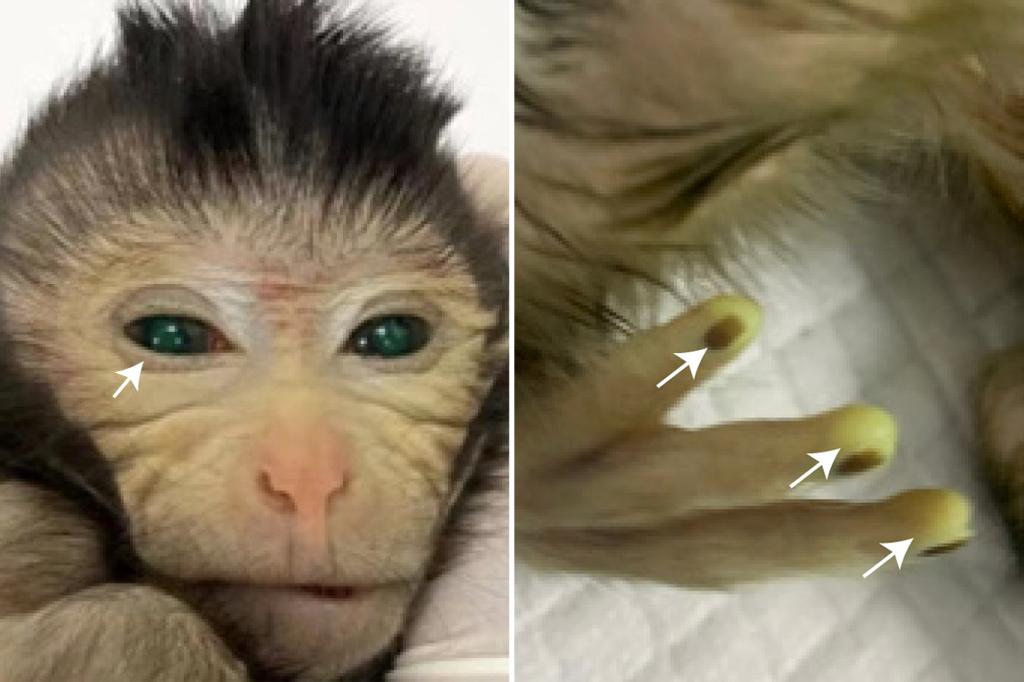Scientists in China have recorded the first live birth of a chimeric monkey using stem cells, with the baby simian having bright green eyes and fingertips, according to a new study.
Researchers from the Chinese Academy of Sciences published their findings on Thursday, noting that the monkey was created from two genetically different embryos of Cynomolgus monkeys, also known as crab-eating monkeys.
The researchers combined test subjects with green fluorescent protein to highlight which tissues had grown specifically from stem cells collected from 7-day-old embryos.
The result is a baby monkey’s fluorescent green eyes and fingers. Scientists describe it as the world’s first live birth of a primate chimera using stem cells.
The monkey, unfortunately, only lived for 10 days before being killed.
The first live birth of a chimeric monkey using stem cells features fluorescent green eyes. Ciao et al/CELL The monkey also has fluorescent green fingers. Ciao et al/CELL
Zhen Liu, senior author of the study, said the success of the monkey’s birth has major implications for stem cell research involving other primates, including humans.
“Specifically, this work can help us generate more accurate monkey models for studying neurological diseases as well as for other biomedical studies.”
Liu added that the research provides implications for genetic engineering and more accurate species conservation among primates.
The green section of the simian body highlights which tissues grow from stem cells.Ciao et al/CELL
“The chimaera monkey also has the potential of enormous value for species conservation if it can be achieved between two non-human primate species, one of which is endangered,” Miguel Esteban, principal investigator at the Guangzhou Institute of Biomedicine and Health and a researcher in the study, told CNN.
“If there is a contribution of donor cells from an endangered species to the germ line, one can imagine that through animal breeding this species can be produced.”
Following their success, scientists at the Chinese Academy of Sciences said they hope to study how embryos survive pregnancy and find ways to improve their line of chimera monkeys.
During their work, the researchers recorded 12 pregnancies among the female macaques, with six following live births.
The child monkey featured in the project was the only one to display the desired characteristics, with the only other chimeric simian dying as a fetus due to miscarriage.
Categories: Trending
Source: thtrangdai.edu.vn/en/



